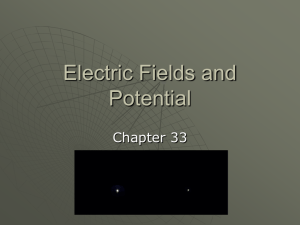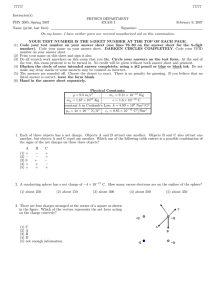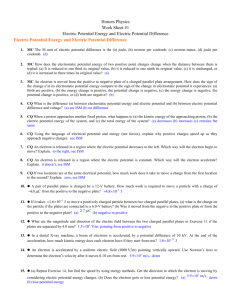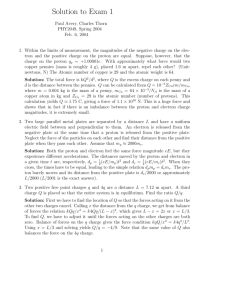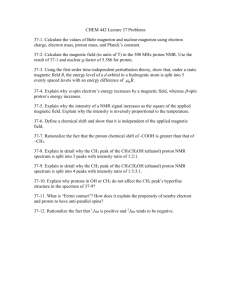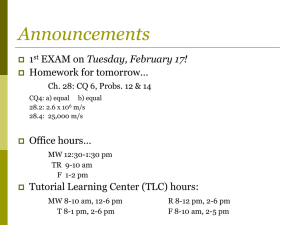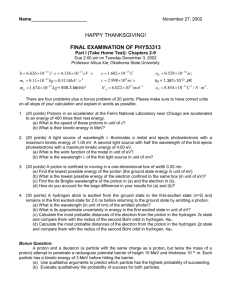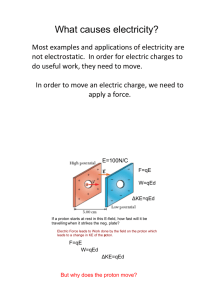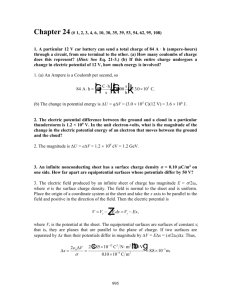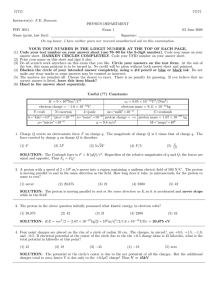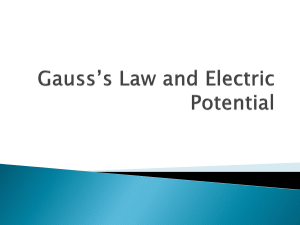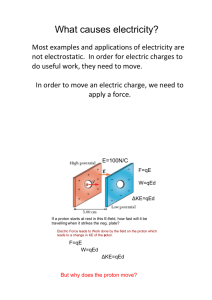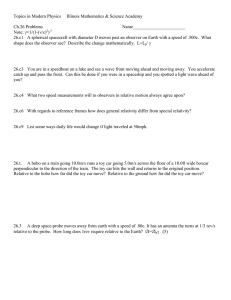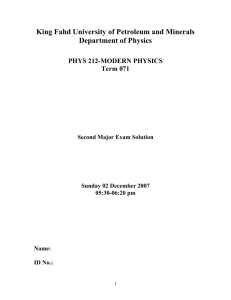Electric Potential Questions
advertisement
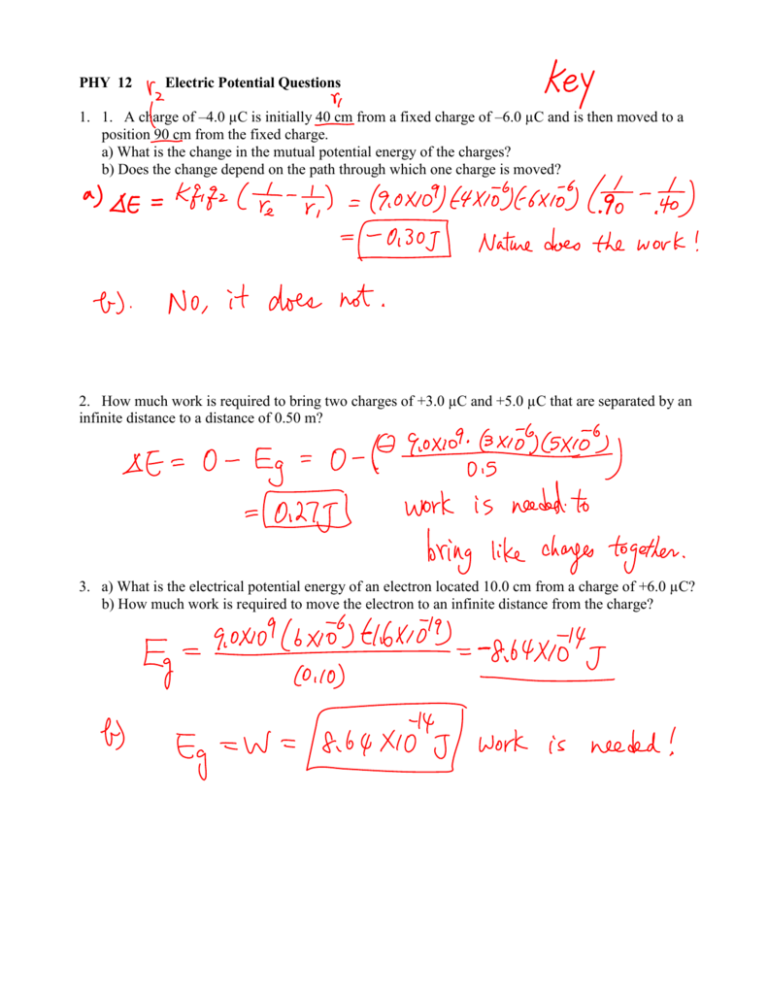
PHY 12 Electric Potential Questions 1. 1. A charge of –4.0 µC is initially 40 cm from a fixed charge of –6.0 µC and is then moved to a position 90 cm from the fixed charge. a) What is the change in the mutual potential energy of the charges? b) Does the change depend on the path through which one charge is moved? 2. How much work is required to bring two charges of +3.0 µC and +5.0 µC that are separated by an infinite distance to a distance of 0.50 m? 3. a) What is the electrical potential energy of an electron located 10.0 cm from a charge of +6.0 µC? b) How much work is required to move the electron to an infinite distance from the charge? 4. Compute the energy necessary to bring the charges together into the configuration shown in figure #1? q1 = +4.0 µC 20cm 20cm 20cm q2 = +4.0 µC q3 = -4.0 µC FIGURE #1 (diagrams are messed up) 5. What is the electric potential at the center of the triangle in figure #1? 6. Compute the electric potential at a point midway between q2 and q1 in figure #1. 7. What is the electric potential at the center of the square in figure #2? 8. Compute the electric potential at a point midway between q1 and q2 in figure #2. 9. A proton is moved 10 cm on a path parallel to the field lines of a uniform electric field of 105 V/m. a) What is the change in the proton's potential? Consider both cases of moving with and against the field? b) What is the change in energy in electron volts? c) How much work would be done if the proton were moved perpendicular to the electric field? 10. Two horizontal (conductive) parallel plates are separated by a distance of 1.5 cm. What voltage across the plates would be required to suspend a) an electron or b) A proton in midair between them? c) What would be the signs of the charges on the plates in each case? 11. Two electrons that are initially rest 10 cm apart are released. What will be their speed when they are 20 cm apart? 12. A proton moving directly toward another fixed proton has a speed of 0.50 m/s when the two are 1.0 m apart. How close to the stationary proton will the moving proton be when it stops and reverses course? 13. The electric field between parallel plates separated by 6.0 cm has a magnitude of 3.0 x 104 V/m. How much energy does an electron gain when it travels from one plate to another? 14. In a television picture tube electron are accelerated from rest through potential difference of 10 kV in an electron gun. (a) What is the muzzle velocity of the electrons emerging from the gun? (b) If the gun is directed at a screen 35 cm away, how long does it take the electron to reach the screen?
